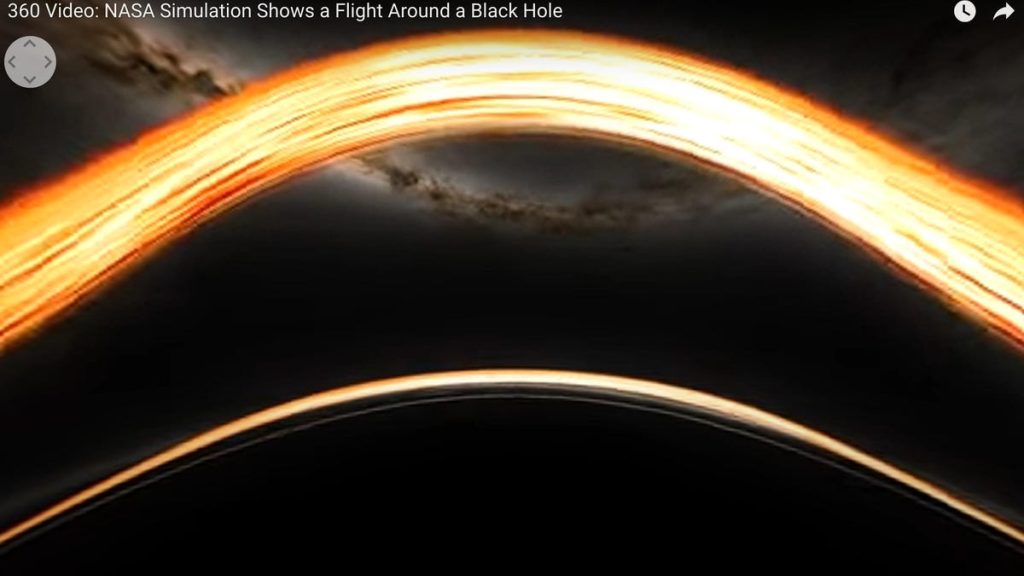This new video from NASA shows what it might look like when an object crosses the event horizon of a black hole, a boundary beyond which nothing, not even light, can escape. The simulation begins with a camera floating towards a black hole, orbiting around it, before flying into the burning gas surrounding the black hole. It then shows the camera experiencing spaghettification as it is pulled into the black hole, eventually hitting the singularity where the laws of physics cease to exist. The simulation includes detailed explanations of each step, as well as technical details of how it was created.
The simulation created by NASA’s Jeremy Schnittman and Brian Powell is much more detailed than existing images of the Milky Way’s black hole. It showcases striking images of photon ring layers and the shrinking sky as the camera is pulled into the black hole. Schnittman also created a second video showing the camera making orbits around the black hole before safely escaping, allowing viewers to experience the trip from multiple angles. The simulated black hole in the video is enormous, measuring about 16 million miles in diameter, making it comparable to some black holes in our cosmic backyard.
Schnittman recommends falling into a supermassive black hole, which contain up to 30 solar masses, as they have larger event horizons and weaker tidal forces compared to stellar-mass black holes. The simulation was created using NASA’s Discover supercomputer in Maryland, generating 10 terabytes of data and taking about five days to complete. This massive simulation was conducted for research purposes to help connect the mathematics of relativity to real-world consequences in the universe. Schnittman simulated two scenarios, one where a camera just misses the event horizon and slingshots back out, and another where it crosses the boundary, sealing its fate.
The intricate details of the simulation provide valuable insights into the behavior of black holes and the effects of crossing their event horizon. The video captures the intense gravitational forces and optical effects that occur near a black hole, portraying a scenario that cannot be experienced in reality due to the destructive nature of black hole environments. By creating such simulations, researchers can better understand the physics of black holes and their impact on surrounding objects, furthering our knowledge of these enigmatic cosmic entities. Ultimately, the simulation serves as a visually stunning and scientifically informative representation of what it might be like to journey into the depths of a black hole.


